More passionflowers
We’ve had a beautiful weather year for the garden. The moist spring turned into a warm but not parched summer, and our fall cold front came almost a month early, bringing lovely cooler nights and plenty of rain. Because of the way our weather works in this part of Texas, it’s almost like we have two springs – everything gets a second wind, picks up, and rejuvenates.
Through the summer, I’ve had the occasional bloom on my “Temptation x Temptation” passionflower vine. This is a cross originally made by Volker Sanders in Germany, although I got my plant from Passiflorista on Ebay (Jim Nevers). During the hottest days, the flowers suffered horribly – they looked like they had been under a heat lamp, with wilted petals and limp coronas. I will have to get a photo if it happens again – it was a real surprise the first time. The other types do not have this problem. Now, however, it’s putting out these luscious, plump flowers with the most amazing coloring.
When I have just one in my hand, the flower on “Temptation x Temptation” looks a lot like the “Incense” vine that it is adjacent to (and mingled with) – big, purple, curly flower. But the color is really quite different.
“Incense” on the left, “Temptation x Temptation” on the right. If you look, you can see the different leaves, too – “Incense” has five-fingered leaves, and “Temptation x Temptation has three-fingered.
Very close to, the corona filaments look like something from under the sea – maybe a sea urchin…
Or a sea anemone.
From the side, there’s a lot of difference between the two flowers. “Temptation x Temptation” is strongly reflexed – meaning that the petals pull back from the flower and arch downward, so looking from the top you see the corona floating in the air. They’re also very robust and fleshy – this plant is a tetraploid hybrid, meaning that its parent plants were chemically treated during the hybridizing process to give it double the usual number of genes. Tetraploids are famous for thick, hardy plants and big flowers. The anthers on this plant are often a little odd – here, they’re pointing upward at the sky, instead of downward at the theoretical bee that should be pollinating the plant. They sometimes manage to rotate downward before the flower closes, but sometimes not.
In the side view, “Incense” is nearly flat.
A new addition – this one is “Blue-Eyed Susan,” with parentage similar to “Temptation x Temptation” and another hybrid, “Bucky” bred by Jim Nevers in Florida. I’m hoping with these three tetraploid hybrids, I might be able to get some fruit. “Bucky” in particular is known for good fruit. Because of the different chromosome number, tetraploid (4n) plants can’t set fruit with normal diploid (2n) pollen; they need 4n pollinators.
And this is “Blue Bouqet” – another hybrid, this one made by Richard McCain. This game little plant just got out after traveling cross-country in a postal box; the whole plant isn’t much past a foot tall, but it’s bloomed already. It’s supposed to be more blue, so we’ll see if that happens. A lot of this kind of flower difference comes down to things like humidity, soil chemistry, hours and intensity of sunshine, etc.



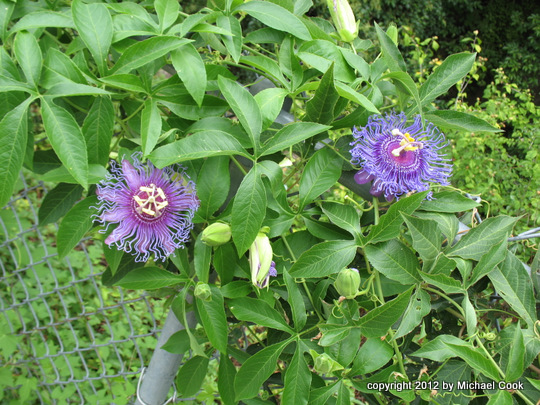
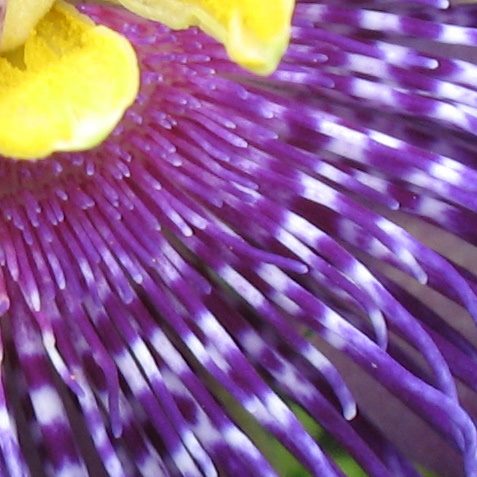
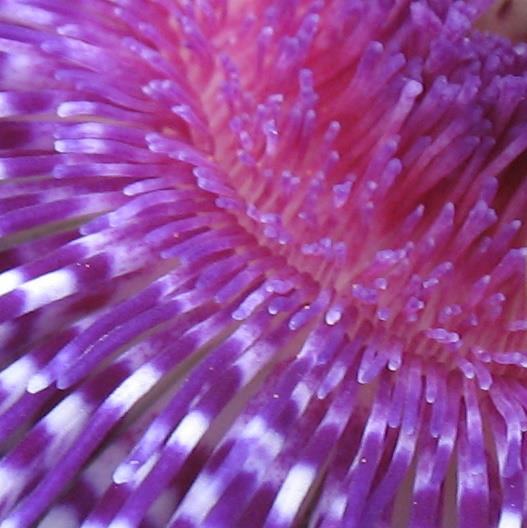

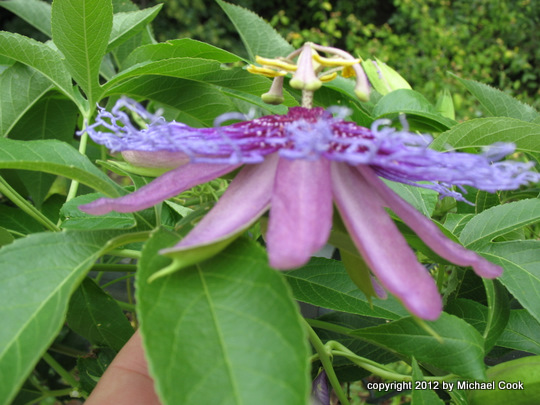
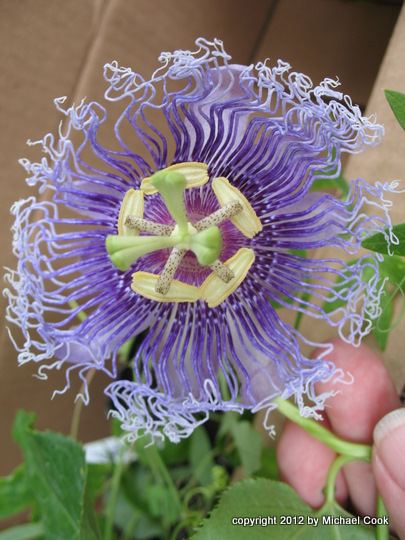
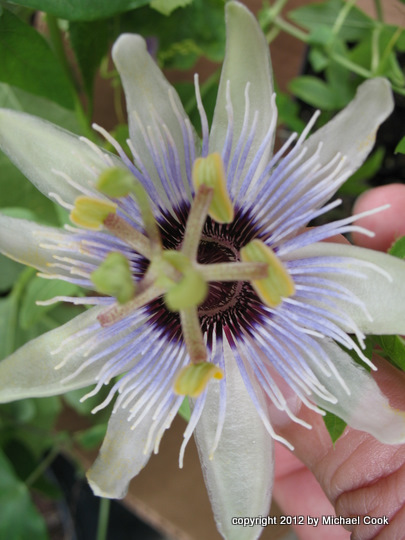
Beautiful flowers, now I’m thinking “Colorways!”
Gorgeous pictures, Michael! Passion flowers always surprise me. I like them in every color they come. Thanks for sharing your garden beauties.
Wow those are some of the coolest flowers I have ever seen! 🙂
oh man, you are killing me with these. now i must go and plant some.
I can’t tell you how much pleasure I’ve got from reading through your entire archive. You have a beautiful, inspiring life.
We live on the east side of Houston and have a passion that is huge and very thick. Has some fruit coming in but almost over night, the entire plant seems to have wilted and appears to be dying… We had a few runs do this 2years ago, but this time the entire plant appears to be folding up. What should I look for, bugs, fungus, both or neither??? Any help would be appreciated.
I honestly don’t know why they occasionally do this. I’ve had large, established vines that just suddenly died.